music Personal Warren's music: Antigravity String Band
by Warren
leave a comment
Meta
SiteMeter
Brighter Planet
The Antigravity String Band, 1982
By the end of 1981, the band had undergone significant changes in personnel. Dee Wood had too much else going on, and left the group (although he continued to play brilliantly in the “jazz” incarnation of Antigravity, documented here), and Skip Parente got a lucrative and creatively fulfilling gig with a major Irish band. After some shuffling, we wound up with Karl Boyle (on flute, pennywhistle and occasional guitar) and a fine fiddler named Anna Teigen, along with me, Anne Goodwin, Stefan Senders and Michelle Kisliuk.
It was this configuration that endured for several years. This band was certainly the most popular one I ever played in; because of the “world music” orientation we had a very different repertoire from any other string band on the scene (even though we did some traditional Appalachian and Irish numbers, they were recontextualized by being heard alongside Tibetan, Lebanese and African pieces) — but because of our instrumentation we had entree to all the venues of Massachusetts’ lively folk circuit.
Lover’s Desire
untitled Turkish Melody
United Like A Mighty River
Shona Agbekor
I’ll post more in the days to come as I get the pieces digitized and uploaded.
music Personal Warren's music: Antigravity String Band musical history
by Warren
leave a comment
Meta
SiteMeter
Brighter Planet
From the Vault: The Antigravity String Band, 1981
Around 1980, I worked out the fingering for a guitar arrangement of multiple parts of the Agbekor drum rhythms which I’d been studying with David Locke. The arrangement I came up with had the Totodzi part in the thumb, the Kagan part in the index finger, and the Gankogui (bell) part in the middle and ring fingers. I messed around with it for a while as a way of internalizing the relationship of the three parts, but never found a chordal structure that seemed satisfactory.
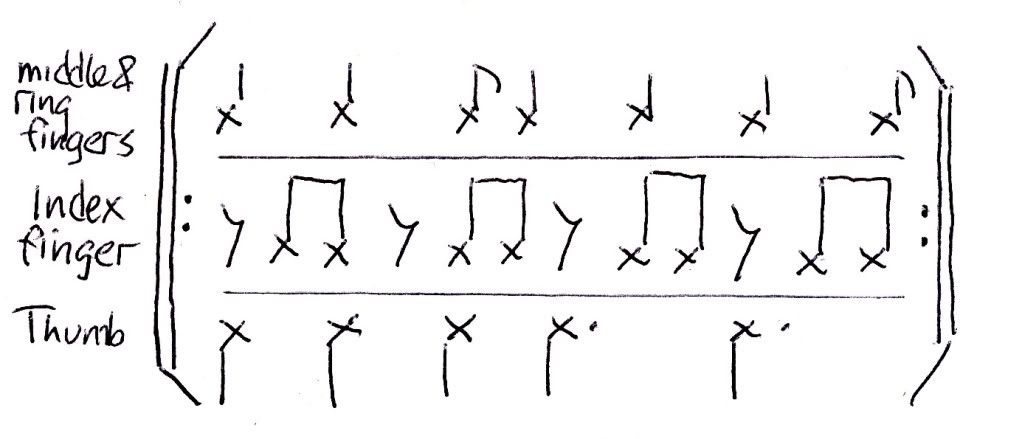
Then one day I was fiddling around with a DADF#AD open tuning, and discovered that the I-IV-I-V progression that manifested so often in group arrangements of Shona music (like Dumisani Maraire’s marimba ensembles) fell naturally under the fingers.
There were some other people in the Agbekor ensemble at the time who played stringed instruments, including Dee Wood (known at the time as “Dogwood”), my brother Stefan, Michelle Kisliuk and Anne Goodwin, and we began experimenting together with multi-instrument versions of the piece. I shifted to bass, and it started to turn into something delightful. Soon after that, we added the fiddle playing of Eddie Parente (known at the time as “Skip”), and we did a few concerts together, presenting our version of the Agbekor rhythms/Shona harmony along with some other pieces we threw together. Skip was a wonderful violinist who brought a beautiful sound to the group, and I was sorry to see him move on after a few months; he got offered a fabulous gig with a major Irish band and would have been a fool not to take it.
Here are a few recordings from our first concert, in May of 1981 at Studio Red Top in downtown Boston. We put together a 45-minute set that included two “Shona-ized” Ghanaian dance rhythms, Dee Wood’s nice arrangement of Abdullah Ibrahim’s piano piece “Tokai,” an Afghani melody called “Lover’s Desire” that I learned from an old lp by the Human Arts Ensemble, and my original composition “Night Melody.” The audience loved us. Loooooved us. That was rare for me; most of my performance ensembles were greeted with desultory applause and phrases like, “Gee, Warren, that was interesting.”
But I digress.
We led off with “Lover’s Desire.” I had threaded paper through the strings of my bass to give a buzzing sound.
The African adaptation that started it all, which we called “Shona Agbekor.” In rehearsal we would sometimes play this for an hour without stopping. Fun.
My original composition “Night Melody.” The scale is that of raga Malkauns, but the ensemble organization was inspired by recordings of Sundanese music which I’d been enjoying.
Abdullah Ibrahim’s “Tokai,” in Dee Wood’s beautiful arrangement — like a chorus of stringed instruments.
“Gahu” was the other African theme we developed…a real dance-party piece.
The band went through some personnel changes in the months after this concert, but continued to gig regularly for the next several years. I’ll be posting more of those recordings in the weeks to come.
Enjoy.
India Indian music Jazz music Warren's music: Ajit Soman Antigravity Ashish Manchanda Atul Keskar Indo-Jazz Ramakant Paranjpe Sudhir Parkhi Vijaya Sundaram
by Warren
4 comments
Meta
SiteMeter
Brighter Planet
Antigravity — The Indian Group, 1990-1991
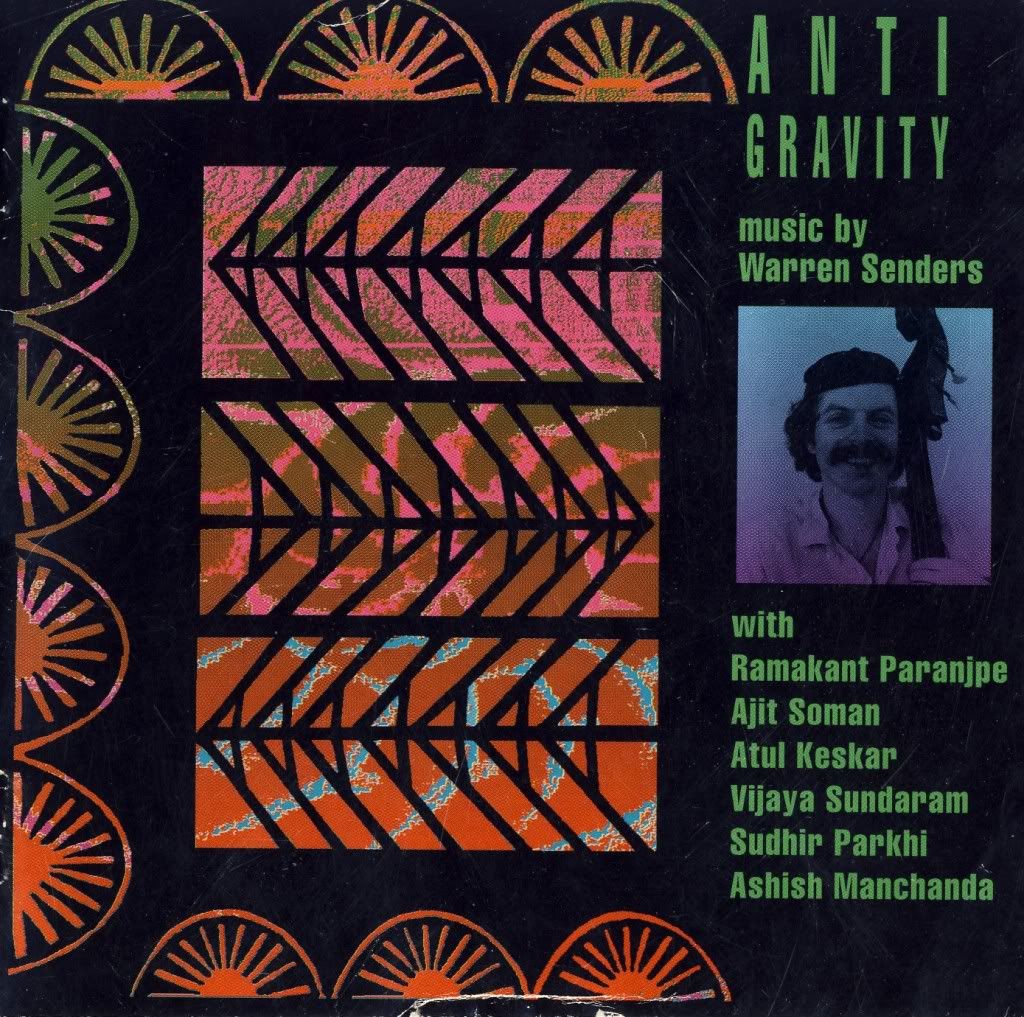
Here are the pieces which make up the first Antigravity CD, released as “Antigravity — The Music of Warren Senders” (Accurate AC-4307), along with scans of the complete CD booklet & tray card. These were recorded at Ishwani Kendra Studios in Pune in 1990 and 1991.
This has been out of print for years. I only have a few mint copies left.
more »
environment India Indian music June 12 Action music Warren's music: Pahadi Puriya Raga
by Warren
leave a comment
Meta
SiteMeter
Brighter Planet
Singing For The Planet: Warren Senders’ Set
Here is my complete set from the “Singing For The Planet” concert. Priti Chakravarty – harmonium, Akshay Navaladi – tabla, Harriotte Hurie – tamboura.
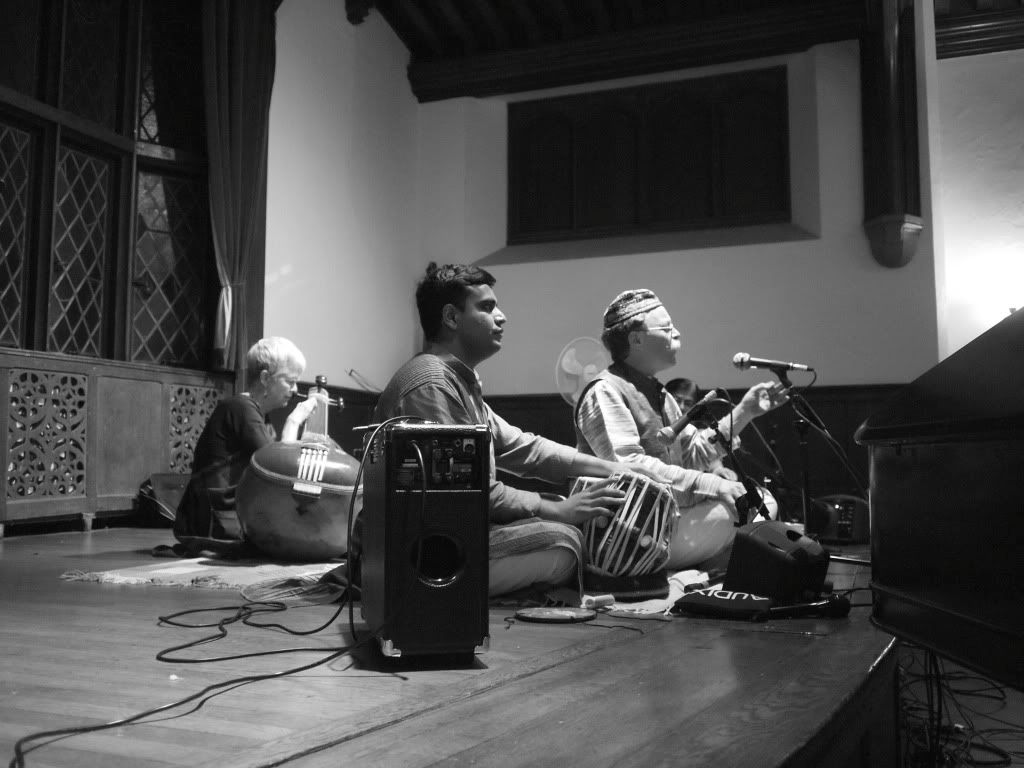
Raga Puriya – three-part khyal performance.
Vilambit Ektaal: Eri malaniyaa begi gunde laawori phulan ke harawa / Bela chameli gulab daru bane ke garawa (traditional composition)
Madhya Tintaal: Main to kaari aayi piya sanga rangaraliyaa / main vaari jaat pan ghat ke ghaat // Ek to dar mohe saas nananda ko / duje duraniyaa jaitaniyaa sataave / nisa din Prem Piya ki baat hai (composition by Ut. Faiyaaz Khan)
Drut Ektaal: tarana (composition by Pt. S.G. Devasthali)
Jyuda Kinjo Dolna (“How My Heart Sways”) – Pahadi folksong
Jyuda kinjo dolna ho manda kinjo bolna / karle mane diyo mauja jinde // Harapur, Nurapur thandiyana chhavaa / maaya balocheda yaar balocheda, hai thaan thaan ho // Chhand mhara chadaiyaa pipari ne ohale / chhand mhara dole, chhand mhara bole, nai aan aan ho
Education environment India Indian music music Personal Warren's music: copyright intellectual property open mics songs
by Warren
leave a comment
Meta
SiteMeter
Brighter Planet
You Can’t Steal A Gift!
My ongoing exploration of alternative ways of thinking about our economic paradigm has given me a new set of lenses to use when I look at the things I already do.
I’m a musician; it’s how I make my living.
Recently a colleague linked to a story in the Boston Globe:
Across New England, church coffeehouses, library cafes, and eateries that pass the hat to pay local musicians or open their doors to casual jam sessions are experiencing a crackdown by performance rights organizations, or PROs, which collect royalties for songwriters.
His FB comment described them as: People trying to get something for nothing and then whining when they are thwarted.
Sympathetic though I am to the needs of working professionals, his words nevertheless didn’t set well with me. This post is my attempt at resolving that dissonance.
I’m a musician. It’s how I make my living — but it’s also how I make my life.
environment Indian music Jazz June 12 Action music photoblogging Warren's music: Mili Bermejo Singing For The Planet
by Warren
leave a comment
Meta
SiteMeter
Brighter Planet
A Quick Report on the June 12 Concert
The “Singing For The Planet” concert happened as planned last Saturday. We had an excellent crowd and raised a little over $800 for www.350.org — and the music was lovely.
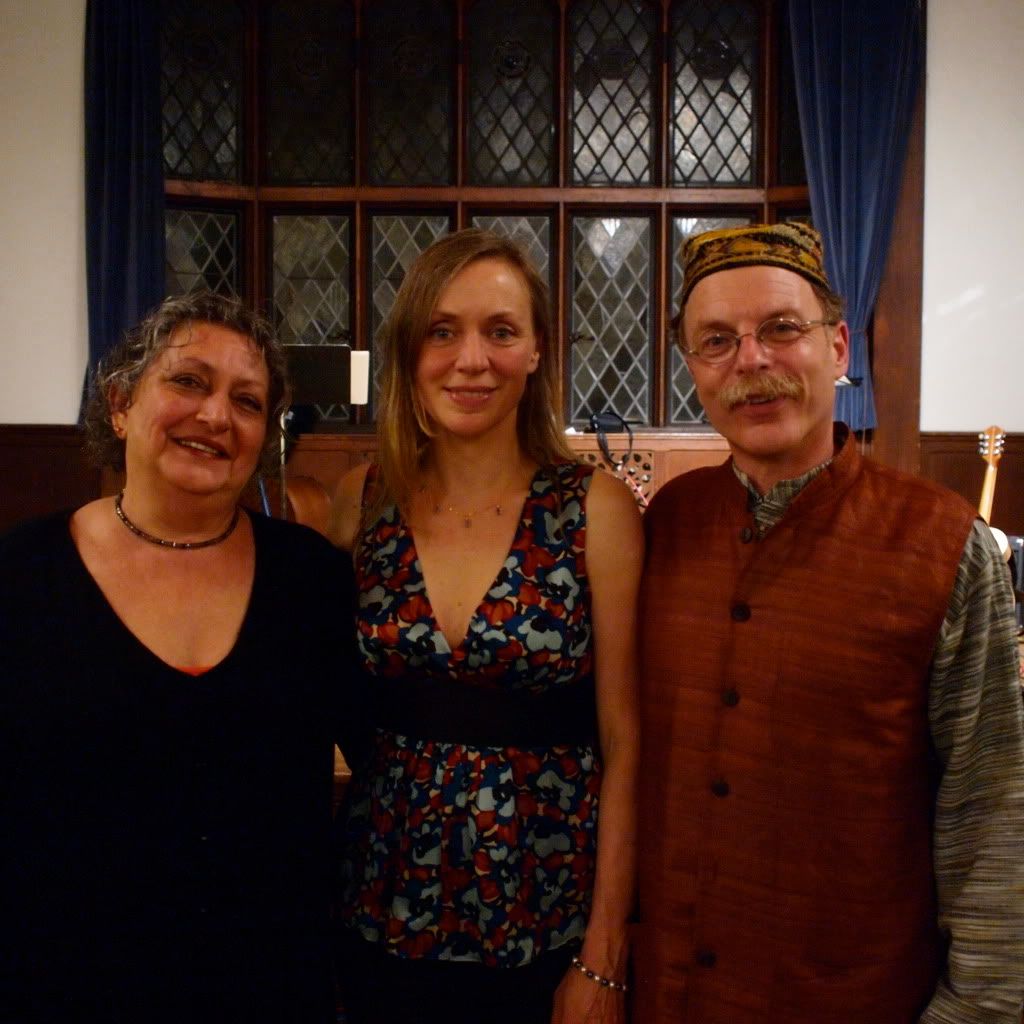
Mili Bermejo, Dominique Eade and Me
I’m just putting a few photographs up for now. A full report with video will go up later this week. These images are courtesy of Hadley Langosey, and there will be more to come.
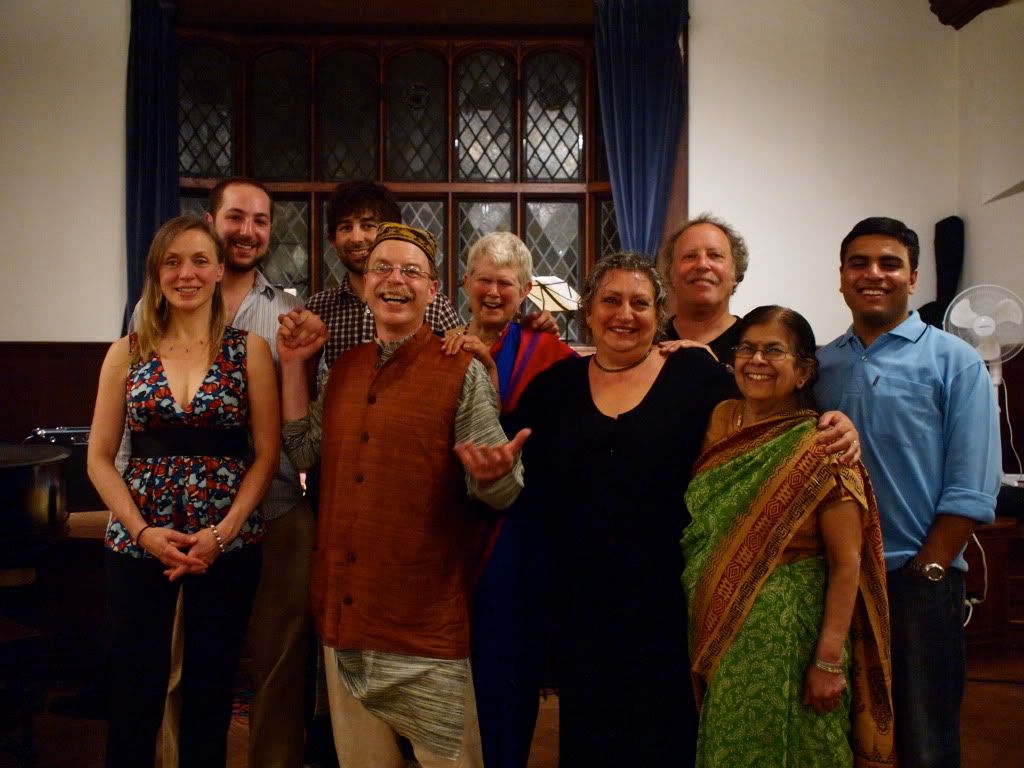
Dominique, Will Slater, Will Graefe, some guy, Harriotte Hurie, Mili Bermejo, Dan Greenspan, Priti Chakravarty, Akshay Navaladi. Missing: Doug Johnson
First Set: The Mili Bermejo Trio
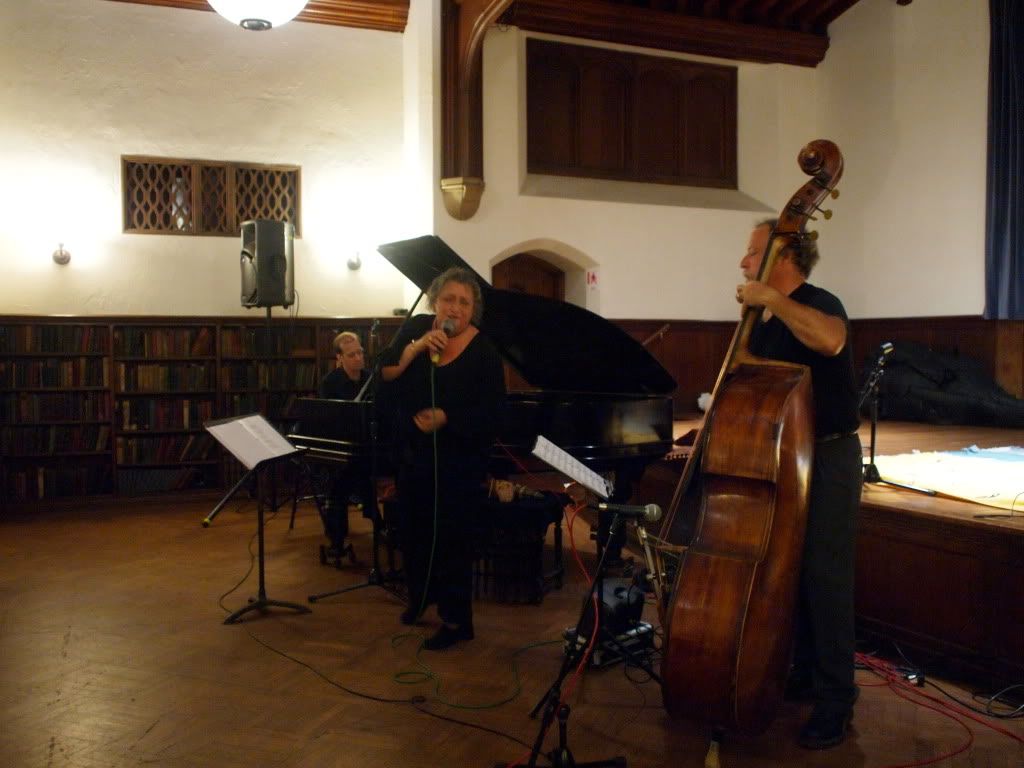
Mili Bermejo with Doug Johnson on piano and Dan Greenspan on bass
Second Set: Warren Senders & The Raga Ensemble
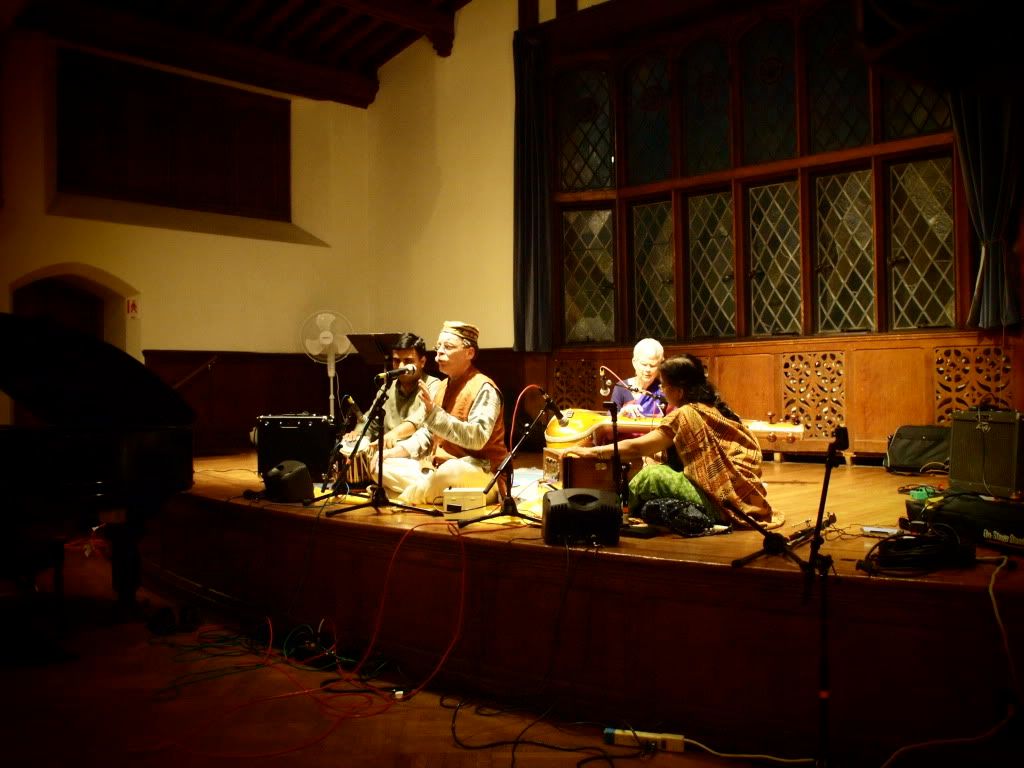
Me, with Akshay Navaladi, tabla; Priti Chakravarti, harmonium; Harriotte Hurie, tamboura.
Third Set: Dominique Eade & Friends

Dominique Eade with Will Slater on bass and Will Graefe on guitar.
Education Personal Warren's music: Brother Blue genius memorial storytelling
by Warren
5 comments
Meta
SiteMeter
Brighter Planet
Remembering The Greatest Storyteller in the World
Today was the memorial service for The Greatest Storyteller in the World. Hundreds of storytellers, musicians, dancers, artists, poets, professors, politicians and just plain folk gathered at Boston’s Cathedral of Saint Paul to celebrate the life and times of Brother Blue — The Greatest.

Brother Blue, aka Hugh Morgan Hill, died peacefully at home on November 3, 2009 at the age of 88. An internationally renowned storyteller, mentor to hundreds, inspiration to thousands…Brother Blue’s life exemplified his passionate belief that telling and listening to stories changes the world. His stories have changed the worlds of everyone who heard him.
Link

Brother Blue — Dr. Hugh Morgan Hill.
I was part of the memorial, held in Boston’s Cathedral of Saint Paul. I drove in with my tamboura and got stuck in traffic, but I was unable to curse my fate, for I was going to sing for Brother Blue, a man whose personal clock moved on mythic time.
Education music Warren's music: games improvisation
by Warren
2 comments
Meta
SiteMeter
Brighter Planet
Musical Game Structures
Quite early in my musical life I became interested in Game Structures. I’ve already mentioned discovering some avant-garde composers through my high-school library’s bizarre decision to subscribe to “Source: Music of the Avant-Garde” during my junior year (two issues/year…and at the end of the year, noting that I was the only person who ever read them, and that I read them constantly, the librarians gave the magazines to me; they’re on the shelf behind me as I write). A few years later, living in Cambridge, I worked with Karl Boyle, who was writing some quite astonishing music that radically transformed the conceptual frameworks of everyone who participated in it.
Particularly important was a set of three pieces called the “Sound/Movement Murals,” an attempt to create performance structures which would engage musicians and dancers in the interpretation of a single set of instructions; all of us were “reading off the same score.” They were performed on stage in Boston; if I recall correctly it was as part of a festival of performance art.
These pieces have continued to influence me, off and on, for the last thirty years or so. Perhaps Karl has them somewhere in his files, and perhaps he would consider releasing them for others to learn from. I hope so.
In 1996 I was developing a music and music-making curriculum for the City of Boston’s After School program. As part of the materials, I wanted to include samples of alternative “notations,” so I generated a few pieces for inclusion in the curriculum (which is still available through Arts in Progress under the title “Ways of Listening”)
Jazz music Warren's music: Chazz Rook Jazz Composers Alliance Orchestra Mingus
by Warren
leave a comment
Meta
SiteMeter
Brighter Planet
Chazz’ Mingus Story: A Composition for Jazz Orchestra and Two Speaking Voices
I write music for the 20-piece big band run by Boston’s Jazz Composers’ Alliance. The JCA Orchestra does several concerts a year (recently we’ve had some Sunday club dates at Johnny D’s, in Somerville, MA, which is really a blast), always featuring writing by all the composers in the collective. I am one among many, the seniormost being the Alliance’s founder, Darrell Katz. You can find out more about the Jazz Composers Alliance here.
In 2007 we decided to present a “tribute concert,” where we’d undertake to give our impressions of the music of three important jazz composers: Duke Ellington, Thelonious Monk, and Charles Mingus. After some dithering, I decided to develop a piece on Mingus. Notice the preposition. I did not want to do an arrangement of a Mingus tune; while I enjoy arranging other people’s music, I had an idea in mind.
One of my oldest friends is a sarod player, an American whom I met in the early years of my study of Indian music. His given name was Charles Rook, but he was known to one and all as “Chazz.” When I asked him how he’d gotten the name, he told me a long and amazing story about his relationship with the great bassist and composer. Since that time (in the mid-70s) I’d heard him tell it over and over, and I’d had it told to me by other mutual friends (“You know Chazz’ story about Charlie Mingus? No? Well…”). So I knew the outline pretty well.
Chazz Rook, visiting Pune in 1987


